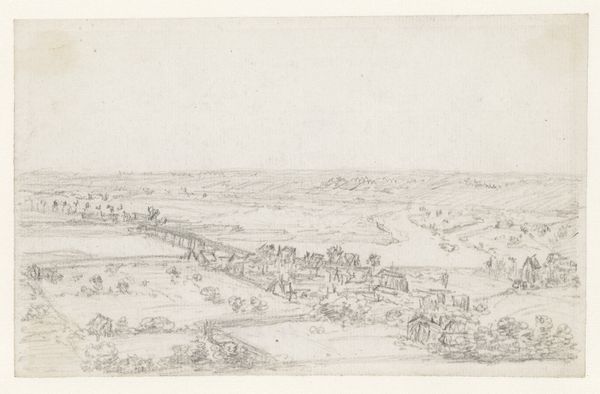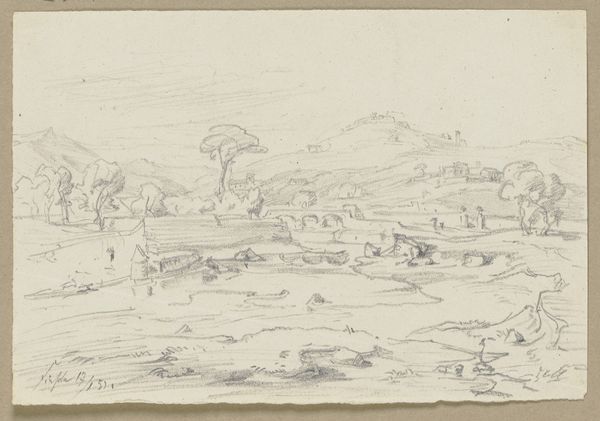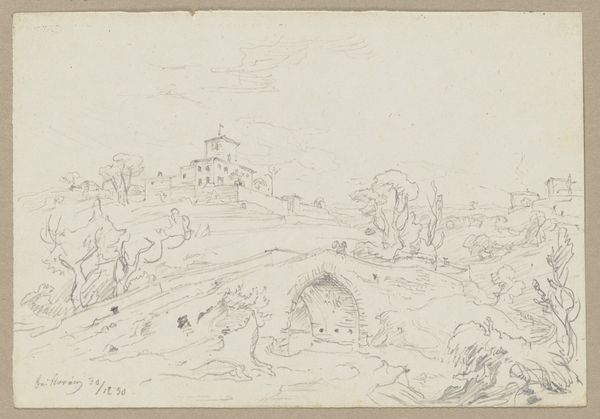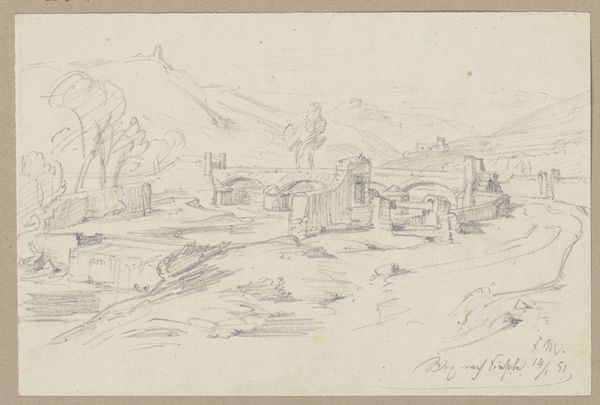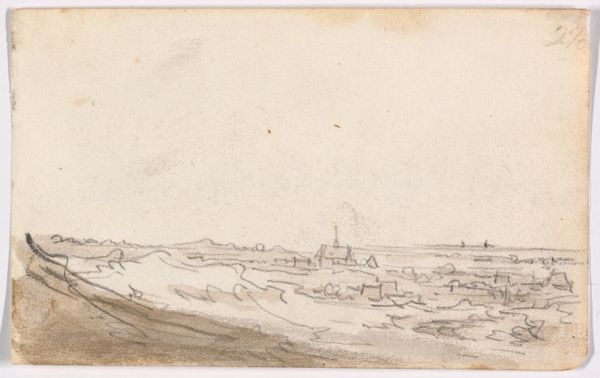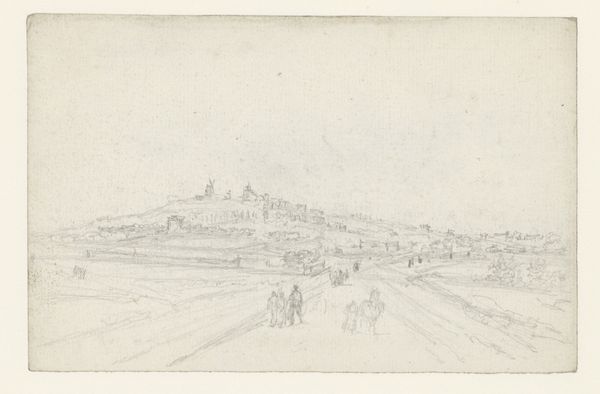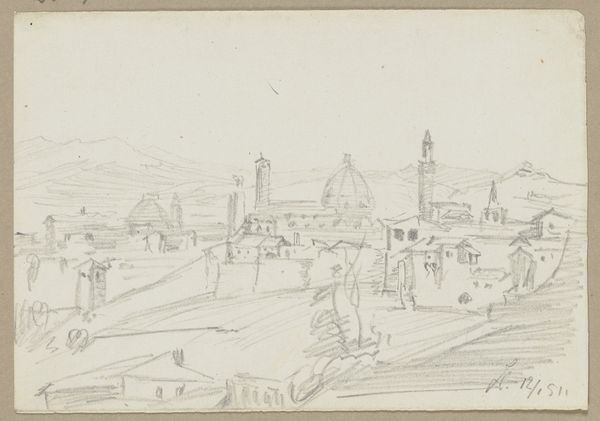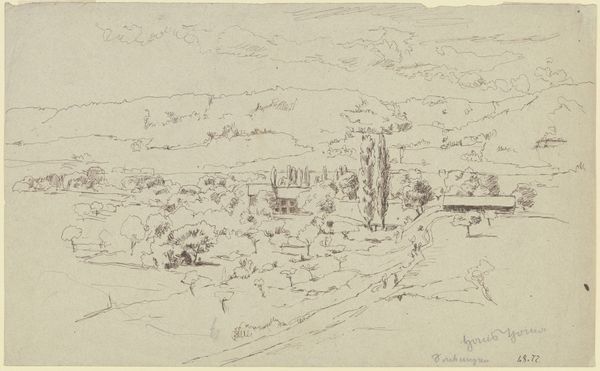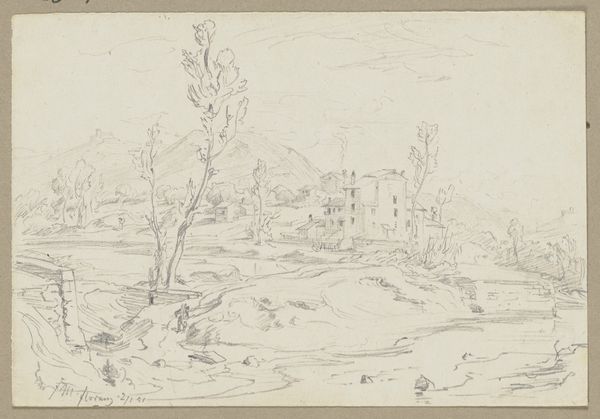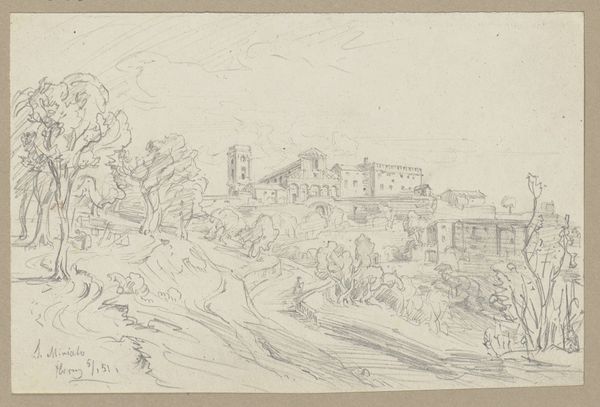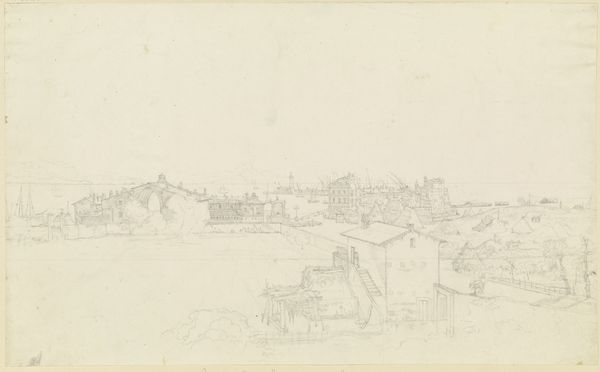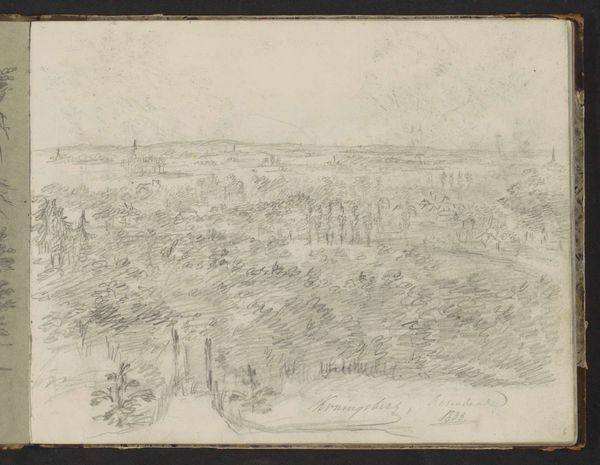
Copyright: Public Domain
Editor: This is Friedrich Metz’s "Landscape near Rome," created in 1851. It’s a pencil drawing, and there’s almost a ghostly quality to it. It’s so delicate, almost like a memory fading away. What do you see in this piece, Professor? Curator: It is captivating how Metz exploits the formal qualities inherent in the pencil medium itself. Consider the deliberate, almost uniform pressure he employs across the picture plane. It yields a hazy tonality, softening edges, creating atmospheric depth and unity between the foreground and distant elements. Do you perceive how this blurs the clarity of individual forms, inviting a visual interpretation that leans toward a more emotionally charged space? Editor: Yes, it does seem intentional, the way everything blends. Almost like he’s less interested in precise detail and more in creating a certain…feeling. Is that the Romanticism coming through? Curator: Precisely. We can note the calculated deployment of horizontal lines, repeated subtly across the plains and the architectural remains, acting as visual anchors. Now, look at the interplay between these lines and the smudging of the pencil. It presents a visual field charged with an oscillating movement, blurring figure and ground, disrupting conventional perception. It also seems that the very surface of the paper informs the visual experience here, since there appear areas employing frottage. Editor: Frottage, right. Almost like he’s tracing textures. So the technique is integral to the artistic meaning here? Curator: Absolutely. Through such applications of texture and tone, he eschews the purely representational, and moves towards an artwork that foregrounds the sensation of the space and temporality in landscape, thus shifting our reading away from mere depiction toward emotional experience and perception itself. Editor: That's really fascinating. I hadn't considered how much the actual technique contributes to that feeling of faded memory. Curator: Indeed. It reveals how a focus on intrinsic visual elements provides the framework to interpret art’s affective potential, and the intentional decisions underpinning an artwork’s meaning.
Comments
No comments
Be the first to comment and join the conversation on the ultimate creative platform.
